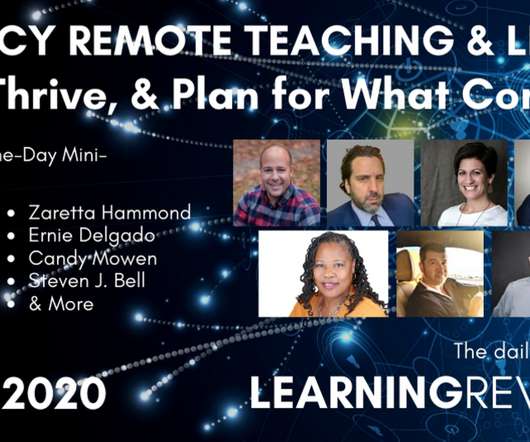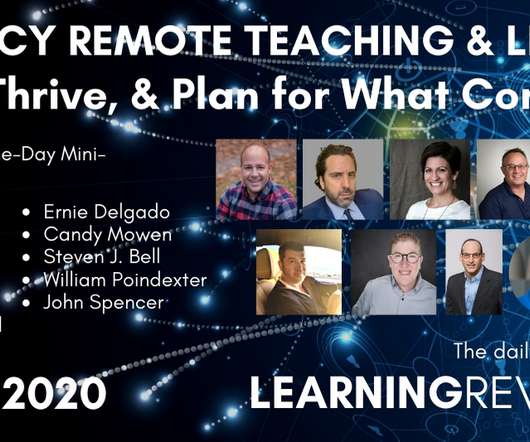When His Roster Outgrew His Classroom, This Prof Mastered Modular Online Curriculum
Edsurge
MARCH 11, 2019
It was an unanticipated scheduling issue that challenged Dr. Bruce Robertson to completely redesign a classroom course to fit an online/in-class hybrid format—in just two weeks. In its stead, he was offered a 150-seat classroom on campus. Different students have different approaches to learning, he says.





























Let's personalize your content